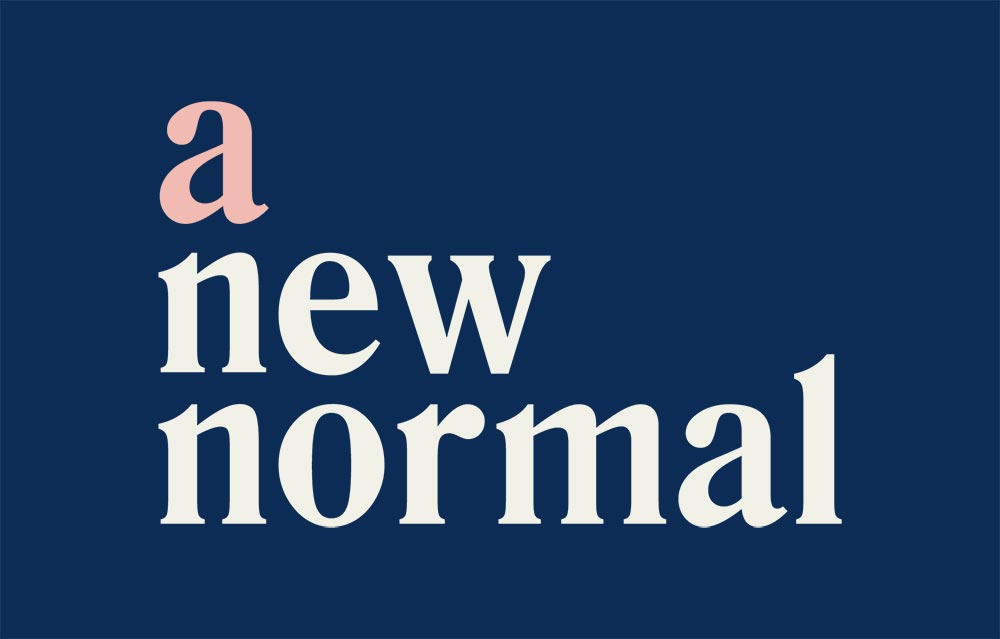
A New Normal – Finding Infinity
Details the opportunity and benefits and identifies case studies associated with transforming Greater Melbourne into a self-sufficient city by 2030.
What is Urban Design?
Urban design is a collaborative process to help shape and design the future form and performance of our cities. Cities are complex, made up of physical elements such as infrastructure, landscape and buildings, but also more intangible elements such as culture, governance and the experiences of those who live there. Urban design coordinates these elements to make cities and neighbourhoods where people want to live, creating places that respond to their context.
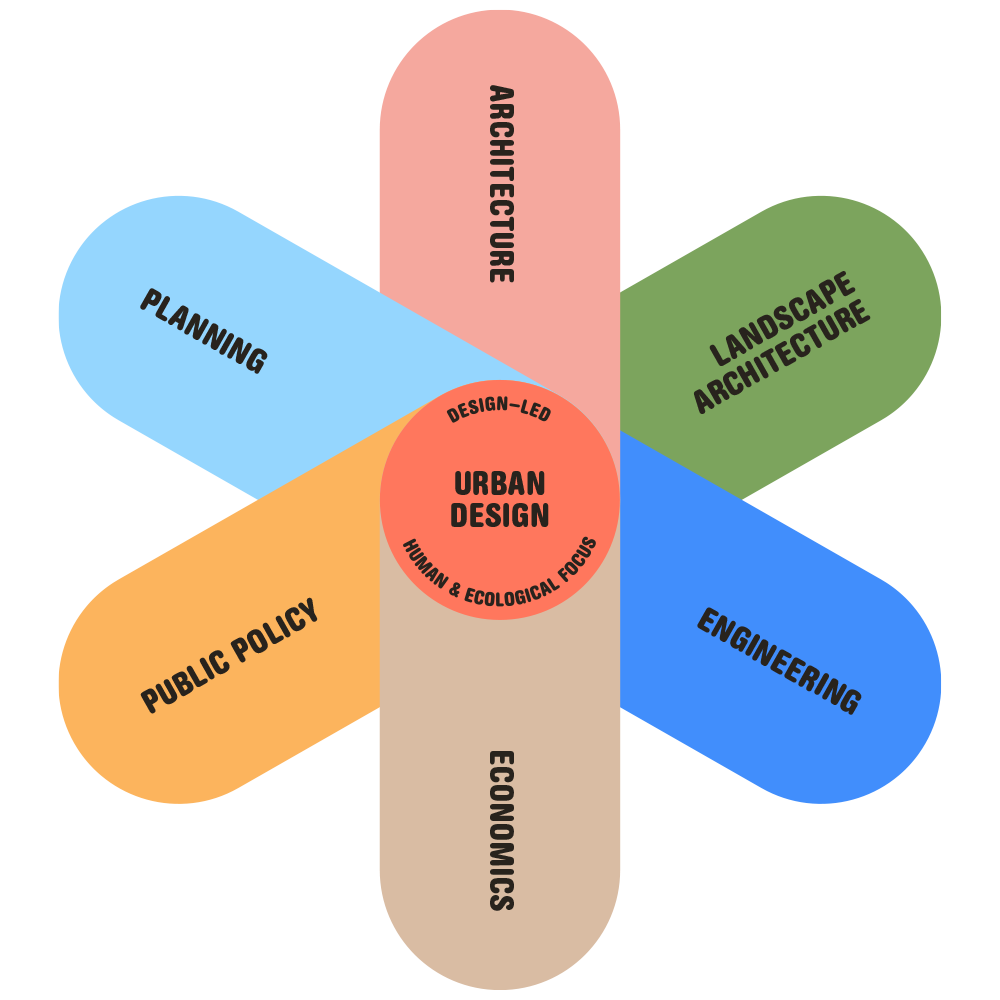
Urban design is visionary
Negotiating complex issues and interests, seeking to address current and future problems within our built environments. Through urban design, we pursue an equitable urban environment with a human and ecological focus.
Urban design is a process
Exploring how to improve and protect our urban environments. Often operating at a strategic scale, urban design navigates the intersection of social, economic and environmental factors over a long period of time.
Urban design is an integrated discipline
Bringing together people from diverse fields to collaboratively explore complex relationships in our cities. Urban designers focus on the public realm – all elements of built and unbuilt space – and intentionally shape our urban environments.
The demand for highly skilled urban designers has never been greater. Australia is facing a shortfall of qualified urban designers, owing to lack of understanding of professional opportunities, limited exposure alongside with challenges with accreditation.
Attracting Talent
Urban design is a rewarding, but less known discipline. We map out the career pathways for the next generation of urban designers and provide a platform for increasing the profile of urban design education and the profession.
Education Reform
Urban design demands far more than technical design skills. Operating at the interface of built environment disciplines, urban designers solve complex urban issues. We are working with a number of Australian universities to continue to elevate the standard of urban design education.
Continued Learning
Urban design is a life-long pursuit of continued learning. We offer master classes for built environment professionals including cross-disciplinary workshops, seminars and study tours. For current information, follow us on social media and subscribe to our mailing list.
We support a collegiate profession that promotes the rapid exchange of ideas, and nurtures a new generation of designers. We believe in collaboration – not competition.
Building Community
Our member networks support connection and professional growth. This includes frequent guest speakers and round table workshops, as well as a curated communication platform to share knowledge and career opportunities.
Mentor Forum
Our mentorship program for students and professionals supports the next generation of urban designers to thrive. We partner mentees with experienced professionals to offer mentorship, coaching and career advice. Click here to read more about the Mentor Forum.
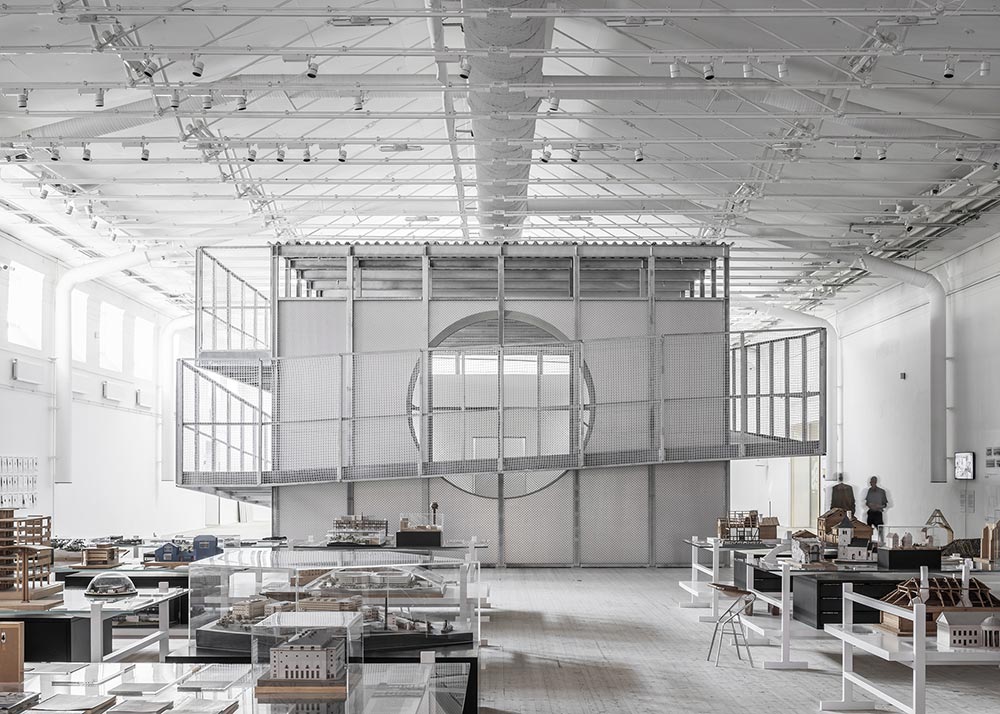
We draw upon our individual members and supporters for their expertise and knowledge, collegiality and commitment to creating a better urban future for all.
Business as usual is no longer a choice. Alone our effectiveness is limited, but collectively we can advocate for the change our world needs. We need public policy that puts people and the environment first. We need development processes that provide ‘more good’, not ‘less bad’. We need education programs that attract the best talent and cultivate the next generation of public interest urbanists.
We enable this change, through empowering a more strategic and effective design industry. Our cities’ future is bright, but we need to work together to get there.
Office, house, street, cafe—rainbow lorikeet corridor?
How did it come to pass that we normalised the idea of our cities as separate from the ‘natural’ world? It should not surprise us that this drift has corresponded neatly with a stark decline in the wellbeing of our planet, and in turn our species. Does the idea that our urban existence can somehow be isolated from the bioregion—the flow of water and the movement of insects and birds—represent innocent ignorance, or a kind of collective insanity?
As we enter an era dominated by urban areas facing the imminent threats of heat waves, floods, toxic air quality, and declining biodiversity, surely we must understand that our seemingly preferred form of habitat is no longer serving our interests.
With so much of our urban areas already built, we ask what tactics are available to us to regenerate the natural systems of our urban environment in a way that provides benefits to humans and other species?
From small practical ideas of garden corridors for pollinating insects to habitat boxes on apartment balconies through to rewilding the Birrarung, Urban Design Forum will facilitate a workshop with leading practitioners, activists and attendees exploring practical, small scale through to more ambitious moves of urban repair that reposition natural systems as central to our city lives.
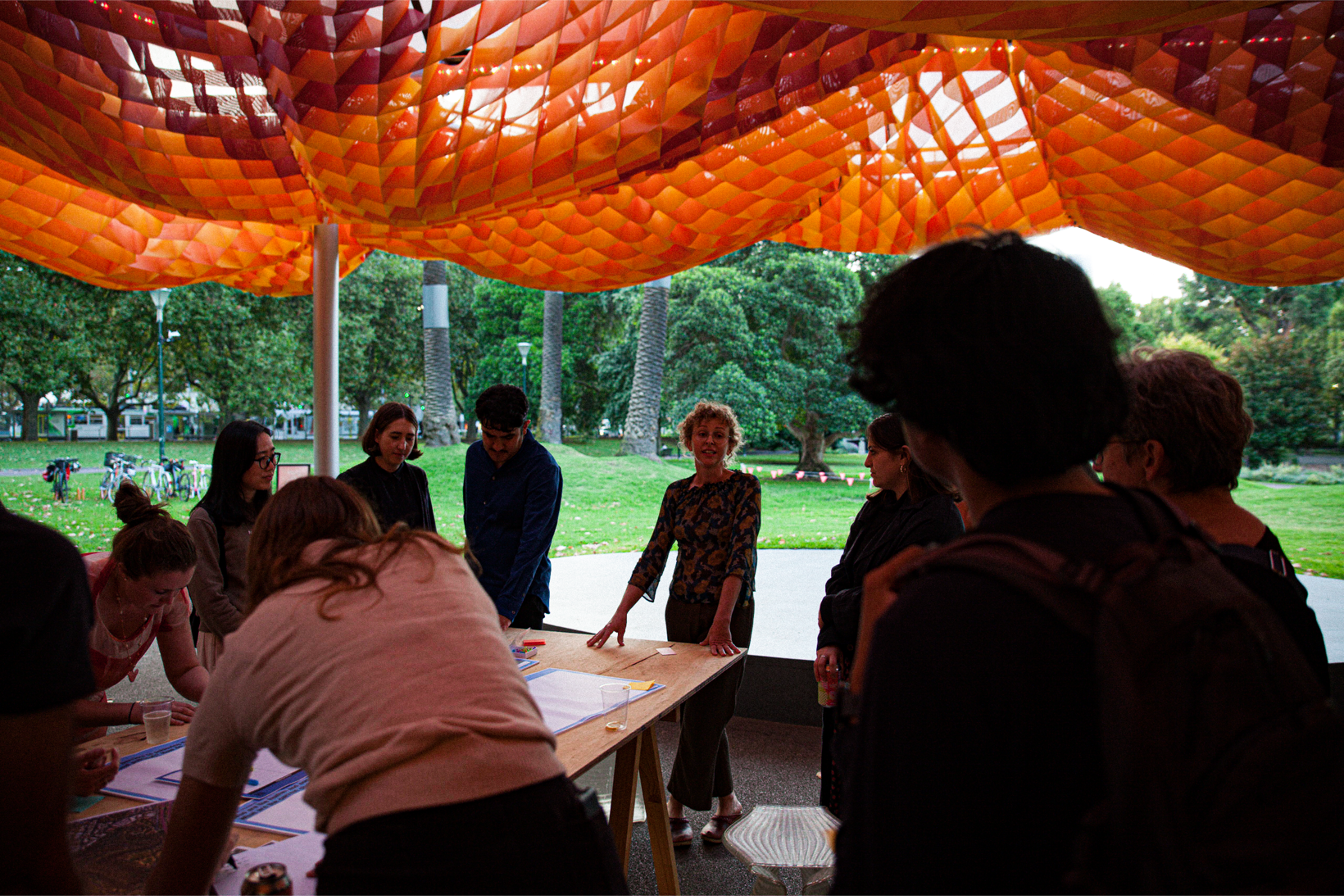


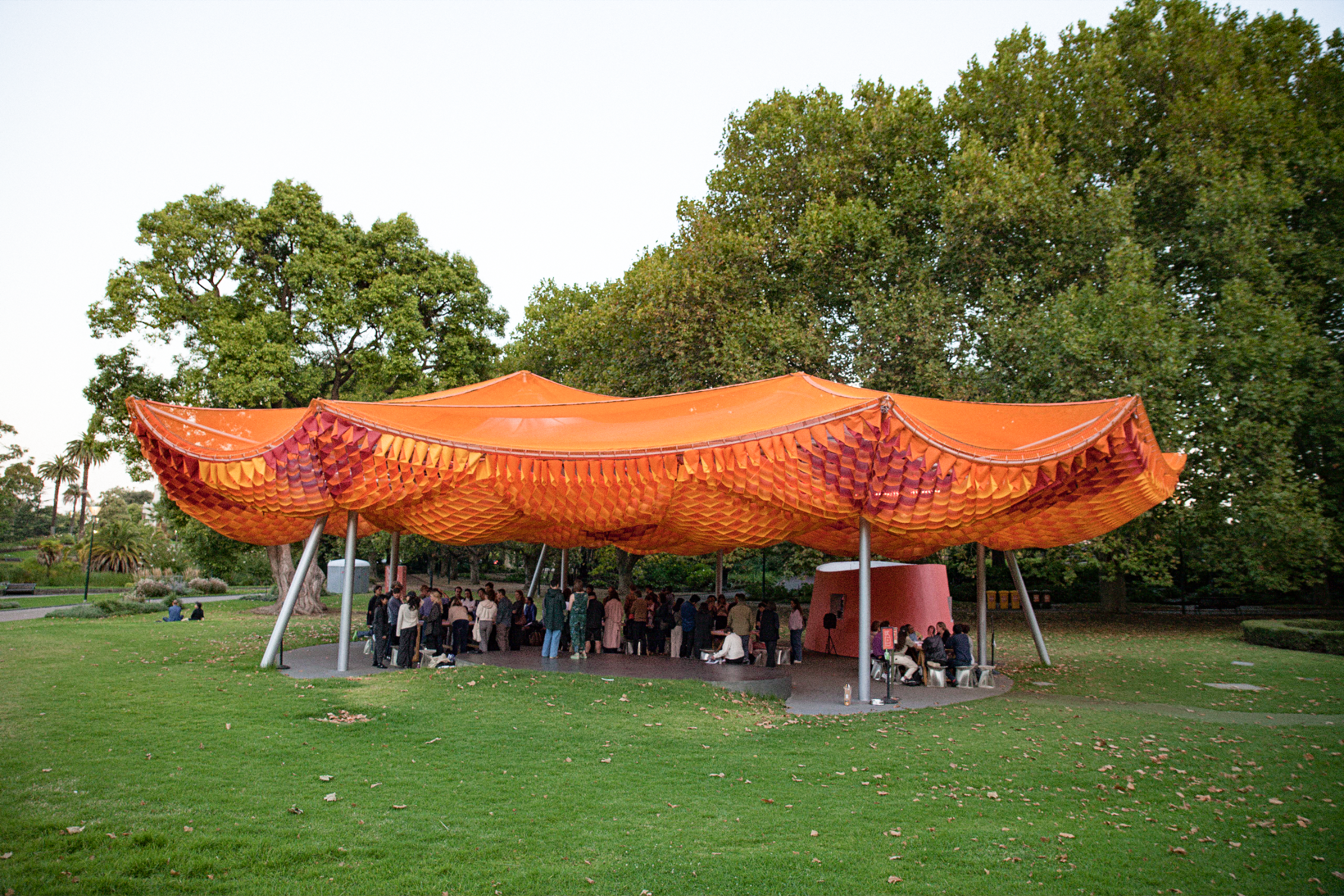






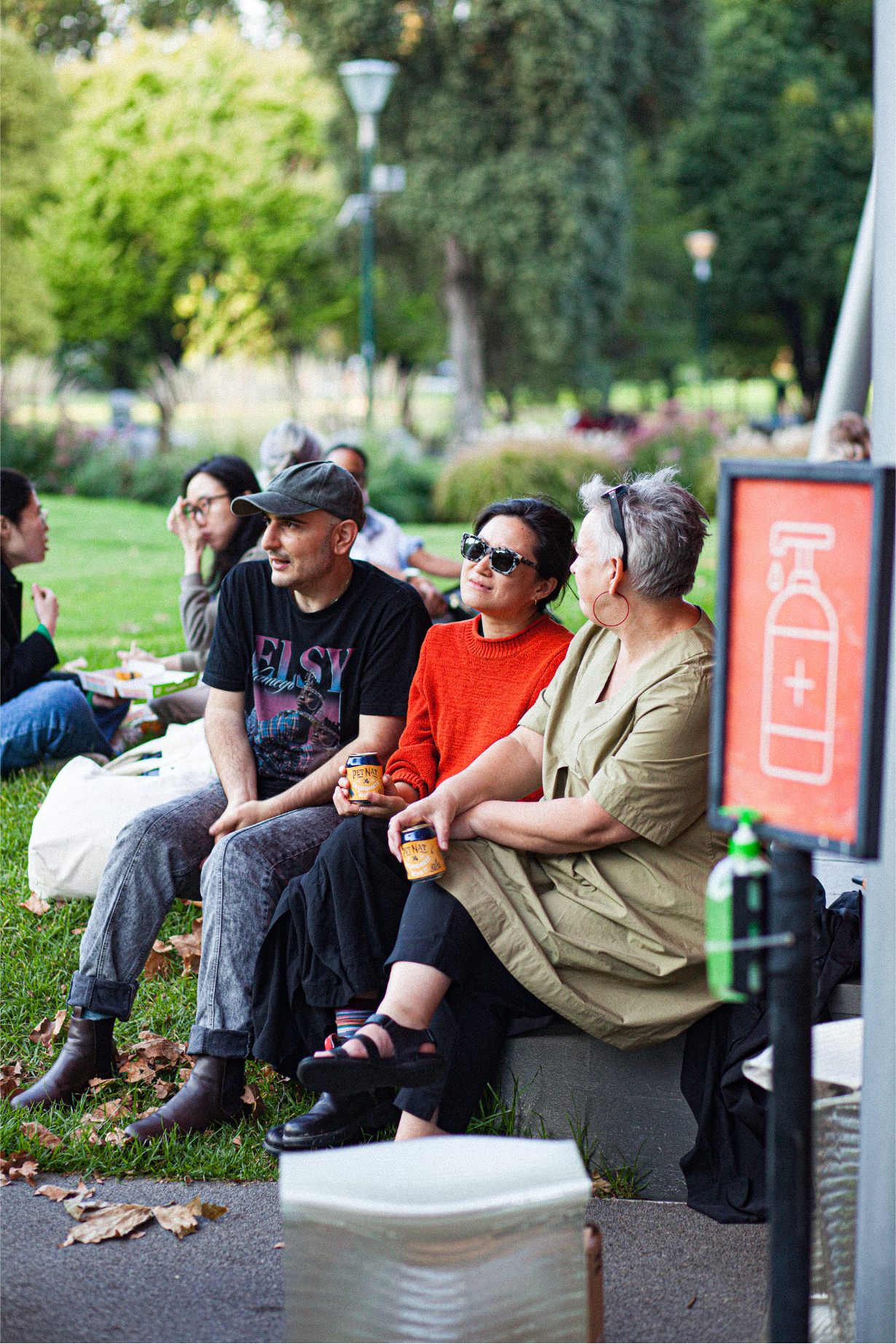










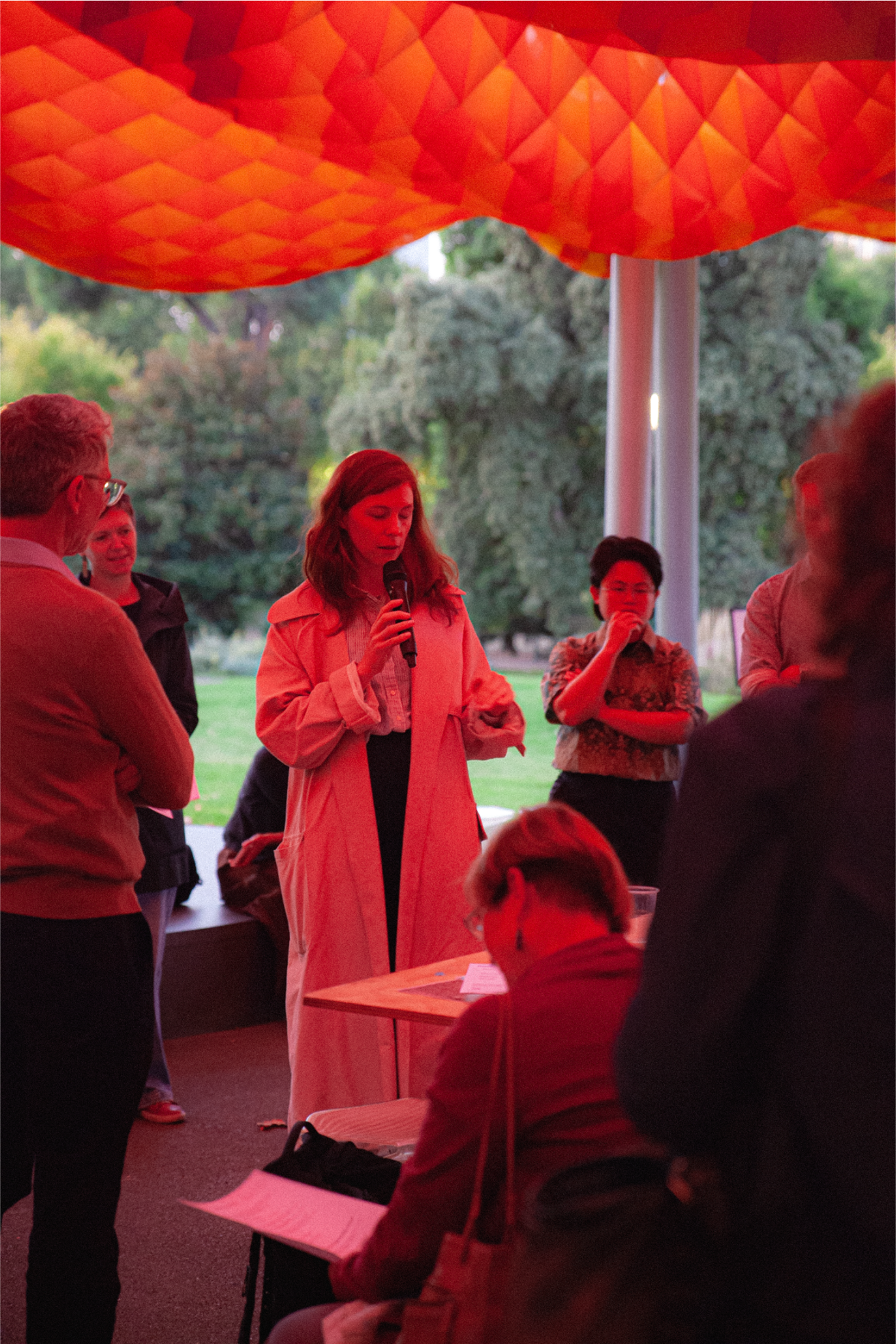














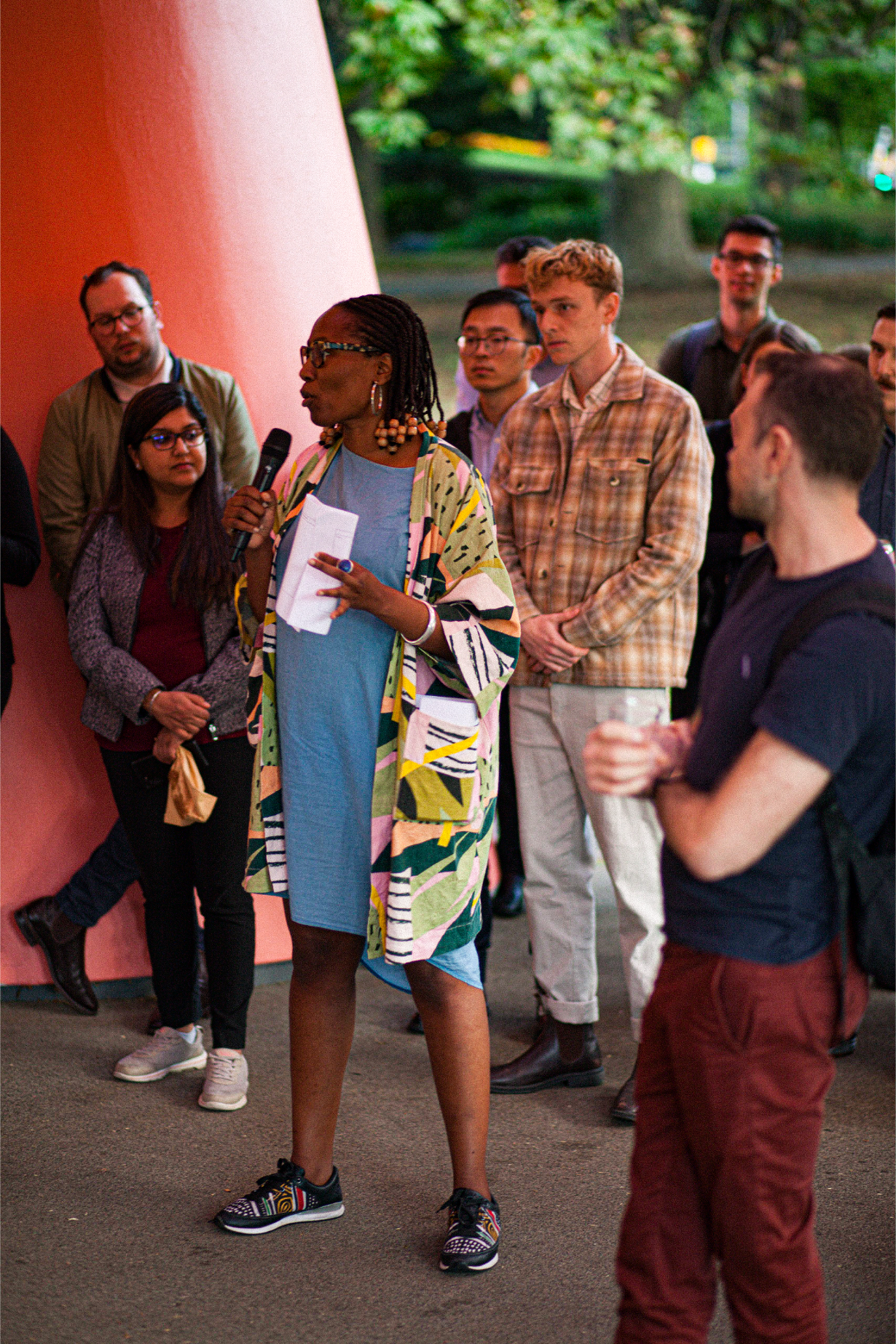
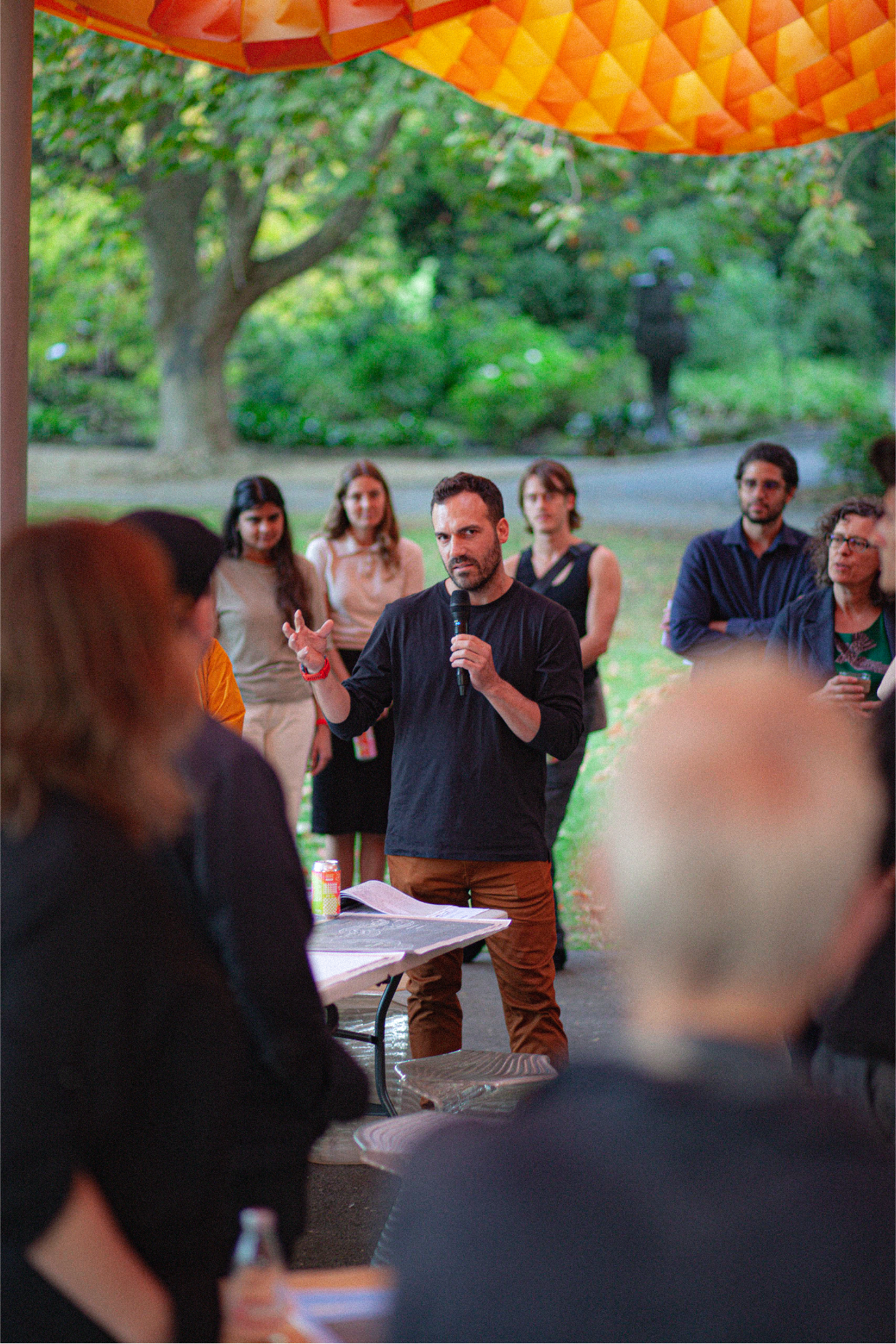
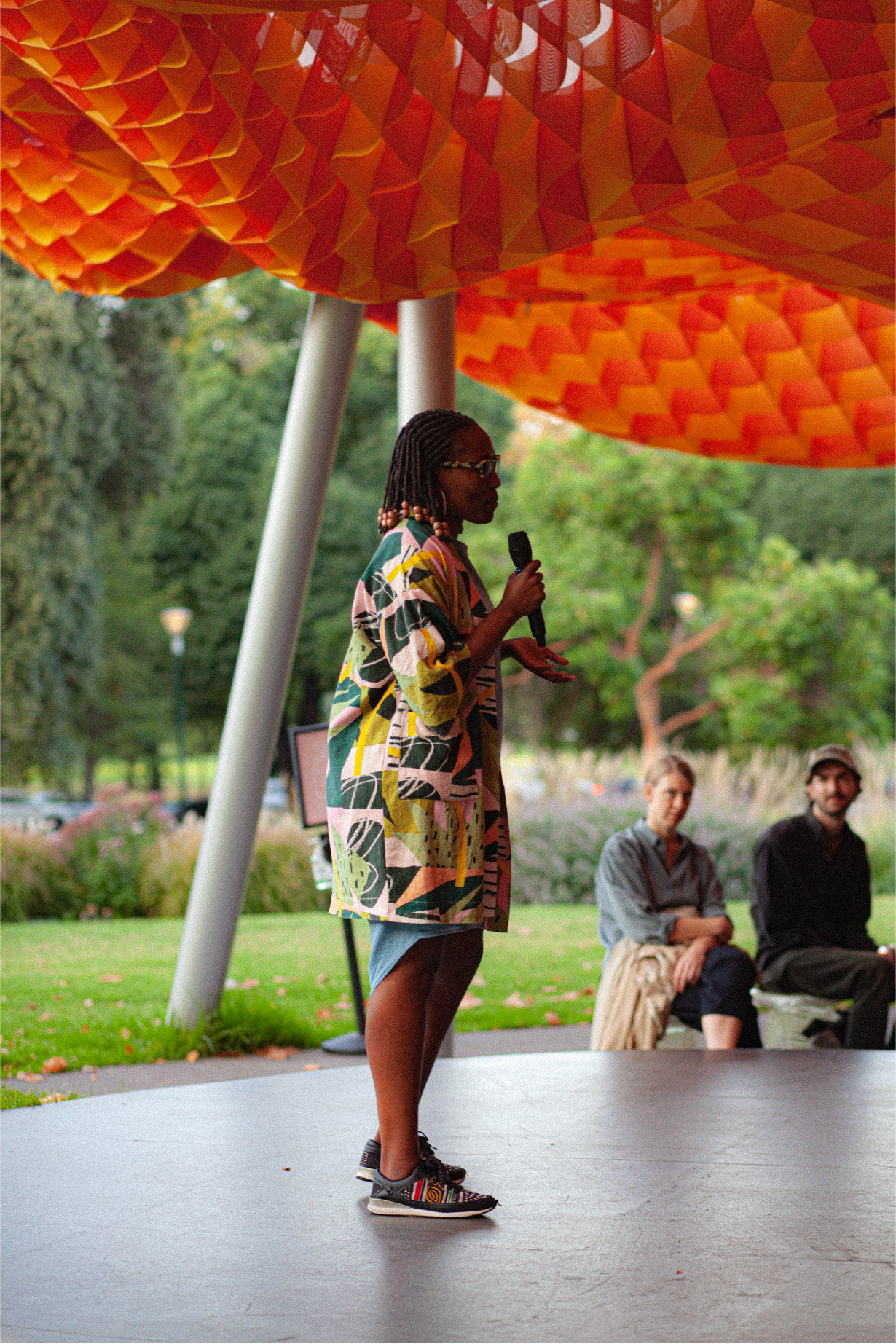

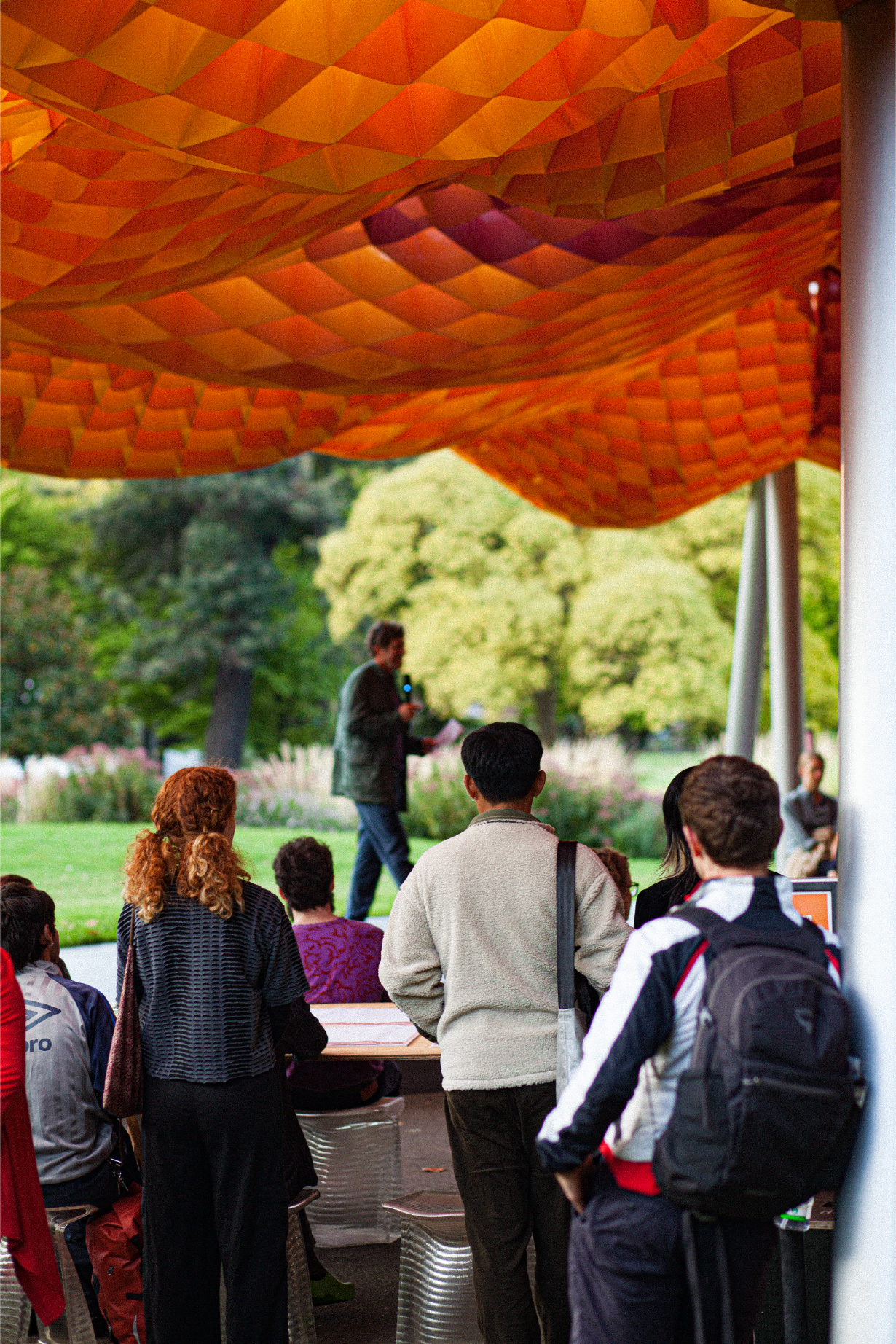








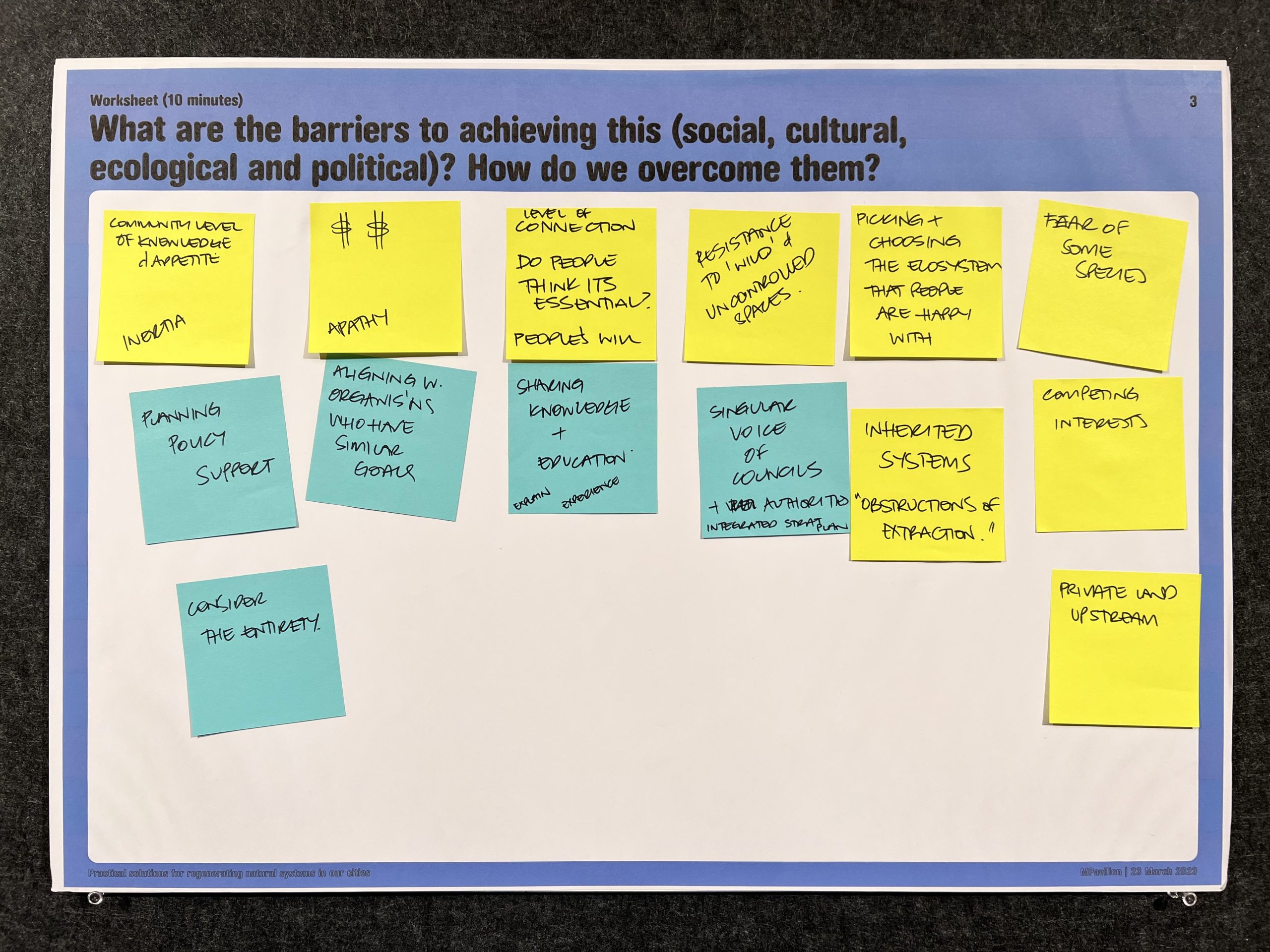









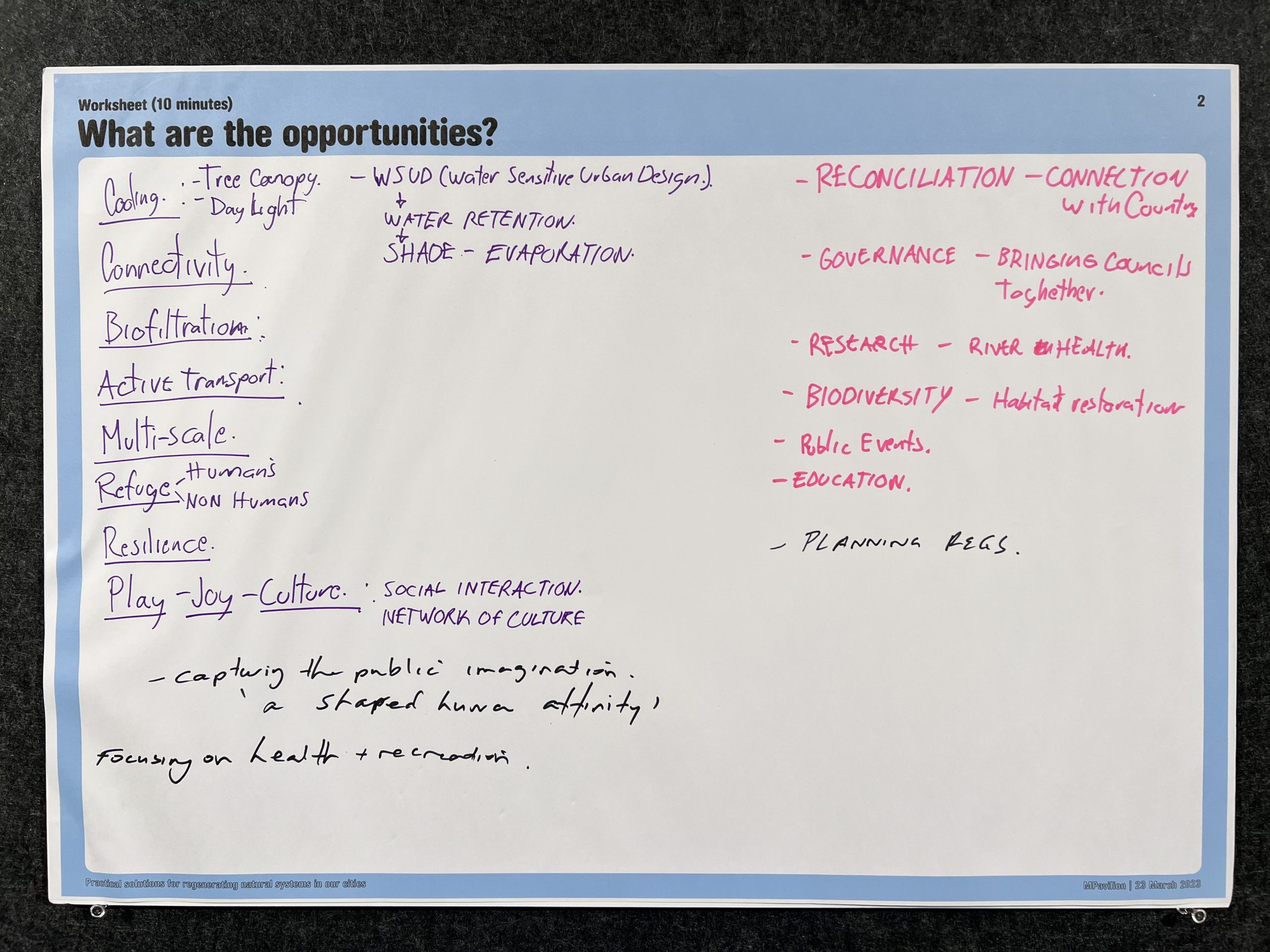

Design
Donate
Educate
Advocate
Thank you to all our collaborators!
Guest collaborators:
Event partners:
Photographs by: Josh Blashki
